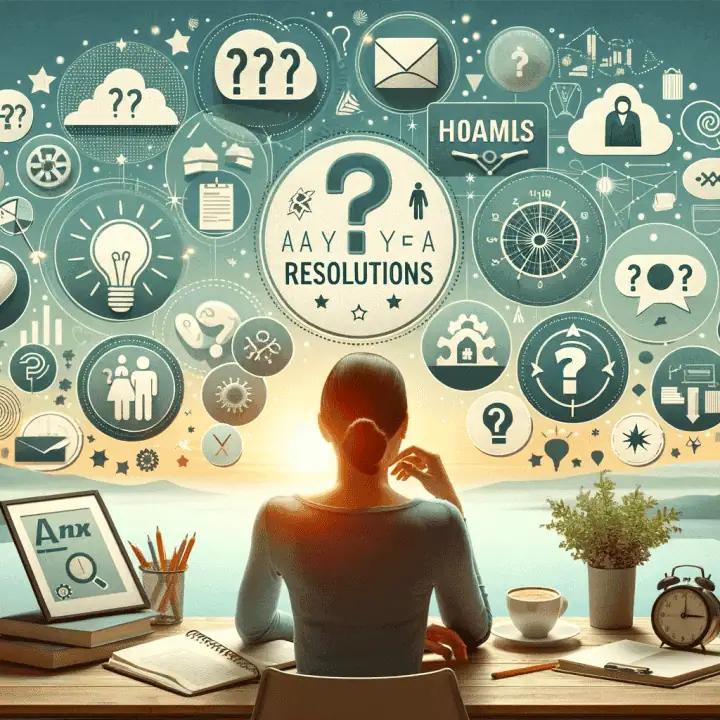Developing Choices about the Emotions we Experience with NLP
What is an emotion?
Most people, if asked, would identify a noticeable set of sensations (feeling) that they experience in response to a sight, sound and or touch from the world or in response to something they were thinking about (internal representations). They would not necessarily take ownership of their response, nor would they necessarily recognise it as part of their own thinking process, which, in fact, it is.
In NLP, we propose that thinking and emoting are accomplished using sequences of sensory representations to carry and frame the content of our thoughts and emotions. These representations include images, sounds, and sensations carrying content gleaned from memory as well as our new creations. This assumes that all our life experience is stored in long term memory, otherwise known as the cognitive unconscious, and that links and relationships between units of knowledge or other material already exist along with the represented knowledge itself.
As we progress through the world, we respond to information, other people, our environment, our work and anything else we find. We also have the choice of attending to our internal world to think about whatever we choose, including but not limited to developing ideas, reviewing past events, creating new work and planning future moves. We attend to our internal world to experience emotions, too. These normally constitute thoughts in response to other thoughts or external experiences, but they still require us to access internal representations of units of content and the relationships between these units.
The difference, subjectively, is that emotions include a kinaesthetic component that is strong enough to be detected by us unequivocally. It is clearly present and far more conscious than the pictures, sounds and sensations that gave rise to it, whether they came from the world or from our own internal representations. Hence the common name of ‘feelings’ for emotions. Feelings are the obvious parts of emotional responses.
If we disregard the pictures, sounds, and other sensations that contribute to an emotion and attend exclusively to the strong feeling, it makes perfect sense to identify the strong feeling, name it, and attribute its presence to anything that attracts our attention.
So if we have been generating our own emotional responses unconsciously and then noticing just the feeling component, now we can learn to generate emotions to order, changing the representations we find limiting and creating more of the states that serve and please us. This might raise a few eyebrows in mainstream culture, where the belief is that emotions happen to people and anyone who claims to have choice about their states is viewed with suspicion. However, there is no need to make a public spectacle of our choices. Simply enjoy the liberation of discovering that emotional choice is much more comfortable than living on an arbitrary emotional big dipper.
The Meta Model
The Meta Model of language is a set of questions used in NLP to clarify and specify distorted and overgeneralised thinking and restore missing information. Part of it provides a linguistic frame for identifying our beliefs about who is responsible for our emotions. Remember a common cultural belief that we can be held responsible for other people’s states: ‘Don’t say that, you will upset your aunt’, or ‘You are making your father angry’, ‘You frightened me’.
This presupposes that it is possible for one person to force an emotional state on another and that we live emotionally at the mercy of other people’s conduct. What is really going on is one person says or does something. Another person responds from their own internal resources and model of the world. The response may be habitual or novel, but it is generated by the respondent, not the other person.
To cloud the issue, there is cultural habituation and a level of influence from the previous conversation or relationship. We may believe there will be adverse consequences to ourselves resulting from someone else’s behaviour. The interaction could be construed as a larger system that includes both people. However, these are possible sources of influence only, not requirements or forcing. They are simply circumstances that could mitigate our developing emotional independence if we allow them to stop us. The bottom line remains, we can each learn to have choice in our own emotions if we want to and we can free ourselves from taking responsibility for other people’s emotional responses.
Describing our emotional responses
Describing our emotional responses in sensory-based terms gives us ready access to changing them. When we become conscious of the images, sounds and sensations we are using, we can identify specific subcomponents. Useful subcomponents include size, brightness, shape, location, clarity of focus, rate and direction of movement, volume, bandwidth, amplitude, texture, temperature, rhythm, and intensity. If we use these instead of attributing a name like ‘happiness’, ‘anger’,’mortification’, ‘or”pleasure’, we have something we can change. If we change one of the sensory aspects, we will find which ones lead any others to change simultaneously. When we identify our own specific sensory aspects that change more than just themselves, we have a way into shifting our emotional states quickly and effectively.
The Chain of Excellence
John Grinder proposes a four-step process for changing state, called the ‘Chain of Excellence’. Briefly, if we alter the way we are breathing, our physiology (posture and movement) changes, if we alter our physiology, our state, including emotions, changes; and if we alter our state, our performance changes. This does not require any verbal description of a state and can be used in the moment. Most people have experiences of stopping a difficult activity and going for a walk. When they come back in a different state, the difficulty has resolved itself. This is using physiology to change state.
While physiology can be used to change state, state also influences physiology, but not necessarily in the same way in all of us. Subject to the activity at hand, a resourceful physiology usually shows symmetry between the left and right sides, an even distribution of weight, an even rhythm in the body, an upright, balanced, and symmetrical carriage, and the minimal muscle tension required for the task. Alterations in attention, emotion, and thought show to an observer as minimal changes in the physiology, but we do not know what the person is thinking, only how they are thinking and that changes are occurring.
Non-verbal communication and ‘body language’
This is non-verbal communication and is differentiated from the so-called study of ‘body language’. The exponents of body language try to put meaning to certain gestures and movements, regardless of differences between every person’s models of the world. One of the most crass is the notion that someone whose foot is pointing at another person is sexually attracted to that person. Another, equally inaccurate, is that sitting or standing with crossed arms means that person is ‘closed’. What happened to ‘cold’, ‘comfortable’, ‘habituated’, ‘resting’, ‘waiting’, and any other purpose that may be served by such a gesture?
Non-verbal communication provides us with ‘news of difference’ or information. Our attention is drawn to changes in posture, movement, rhythm, breathing, skin tone, and other minimal cues during interactions, and if we need to know what the other person is experiencing, we can ask them. It is a great way of discovering that other people really do have different models of the world from us and from each other.
Learn more
Check out our 10970NAT Graduate Certificate in Neuro-Linguistic Programming program.
(Note: If you would like to learn more about the New Code of NLP, you can get a copy of our latest Kindle book, ‘AEGIS: Patterns for extending your reach in life, work & leisure’ by Jules Collingwood, NLP Trainer. For only $4.99 here).
Learn more about NLP by reading our Ultimate Compendium of NLP
If you found this article useful, please share it!
Similar Posts
Subscribe Now!
Stay Up-to-Date with Our Latest Courses and Special Offers
Stay in the loop with new course releases and opportunities by completing our form. Never miss out!


